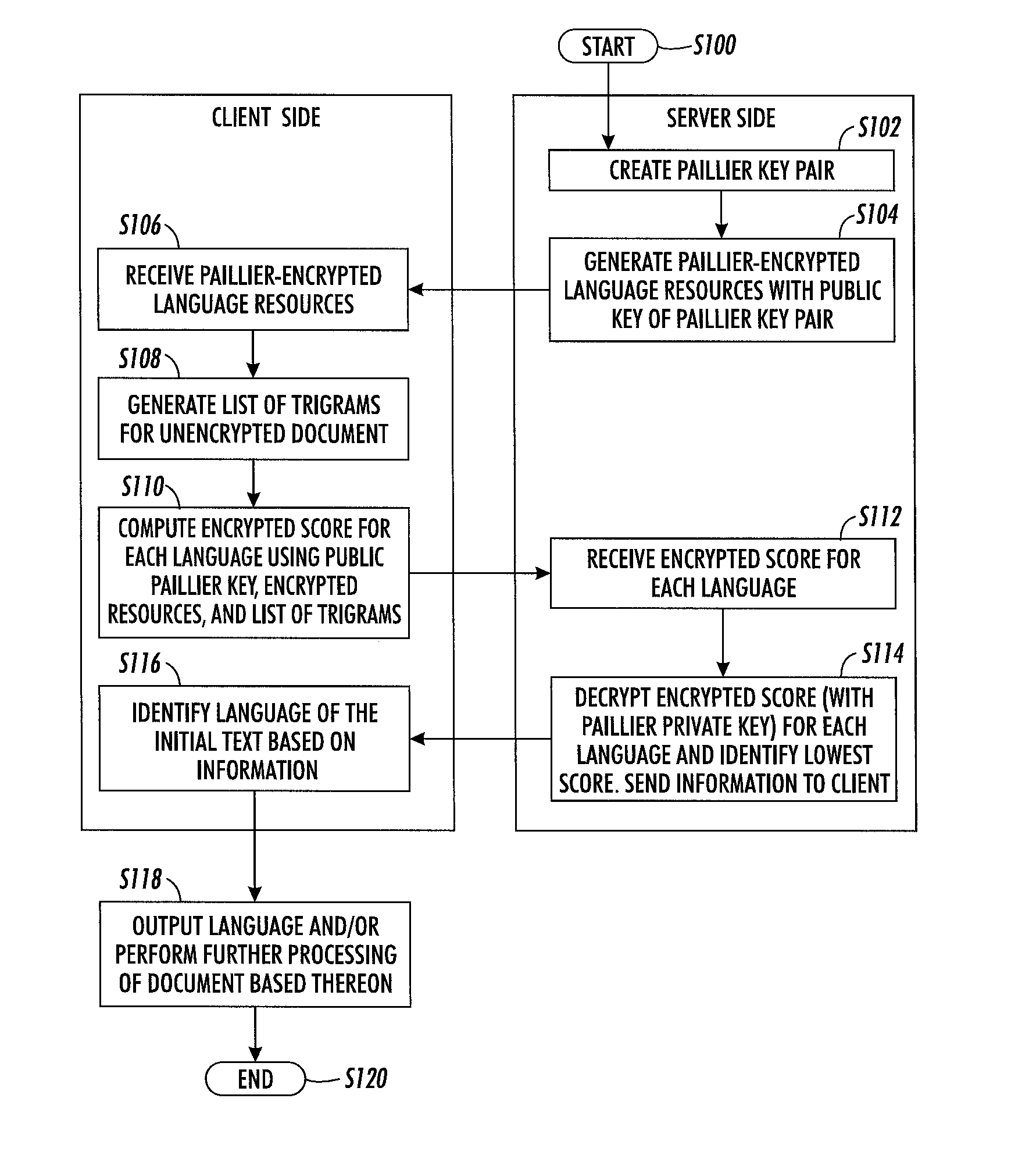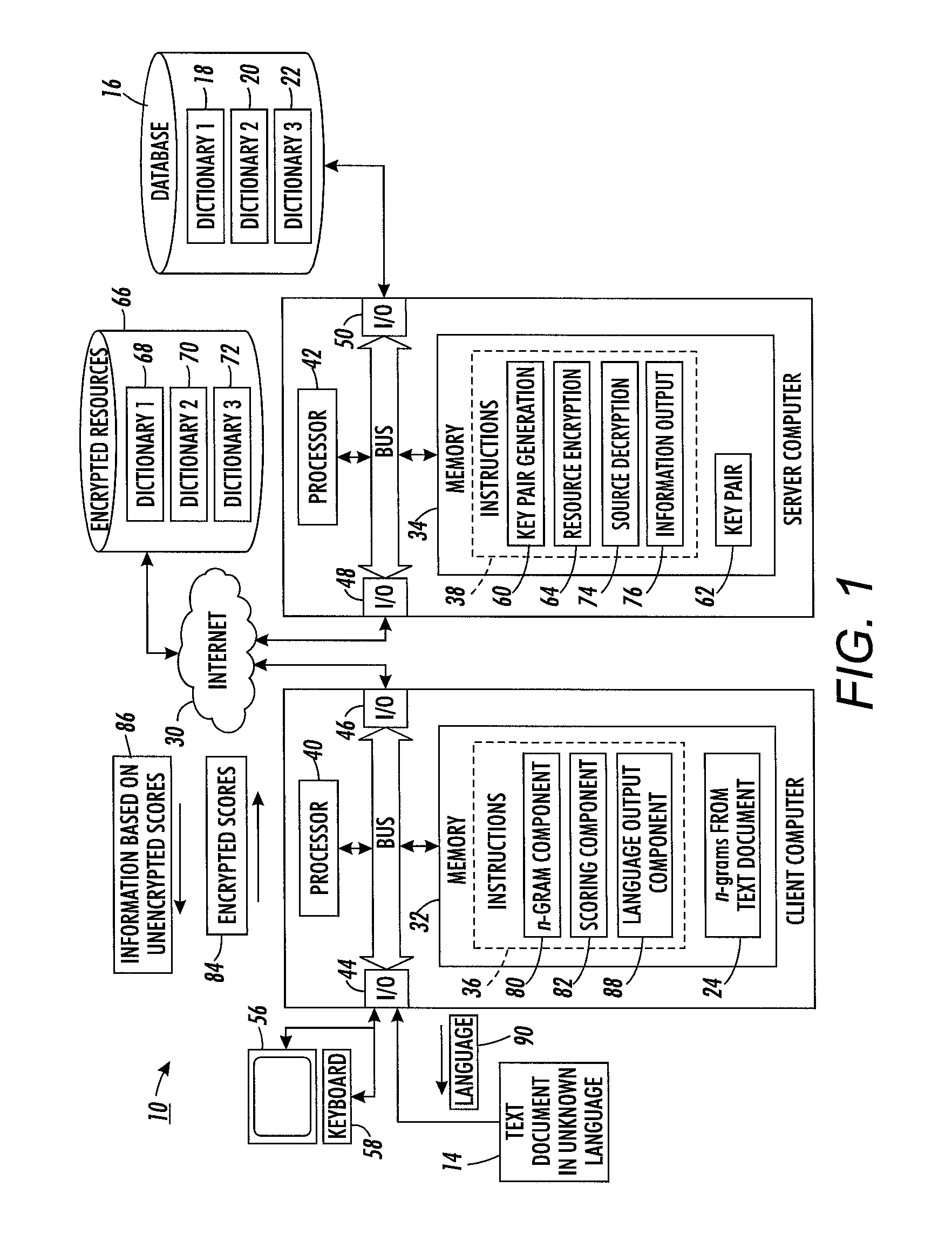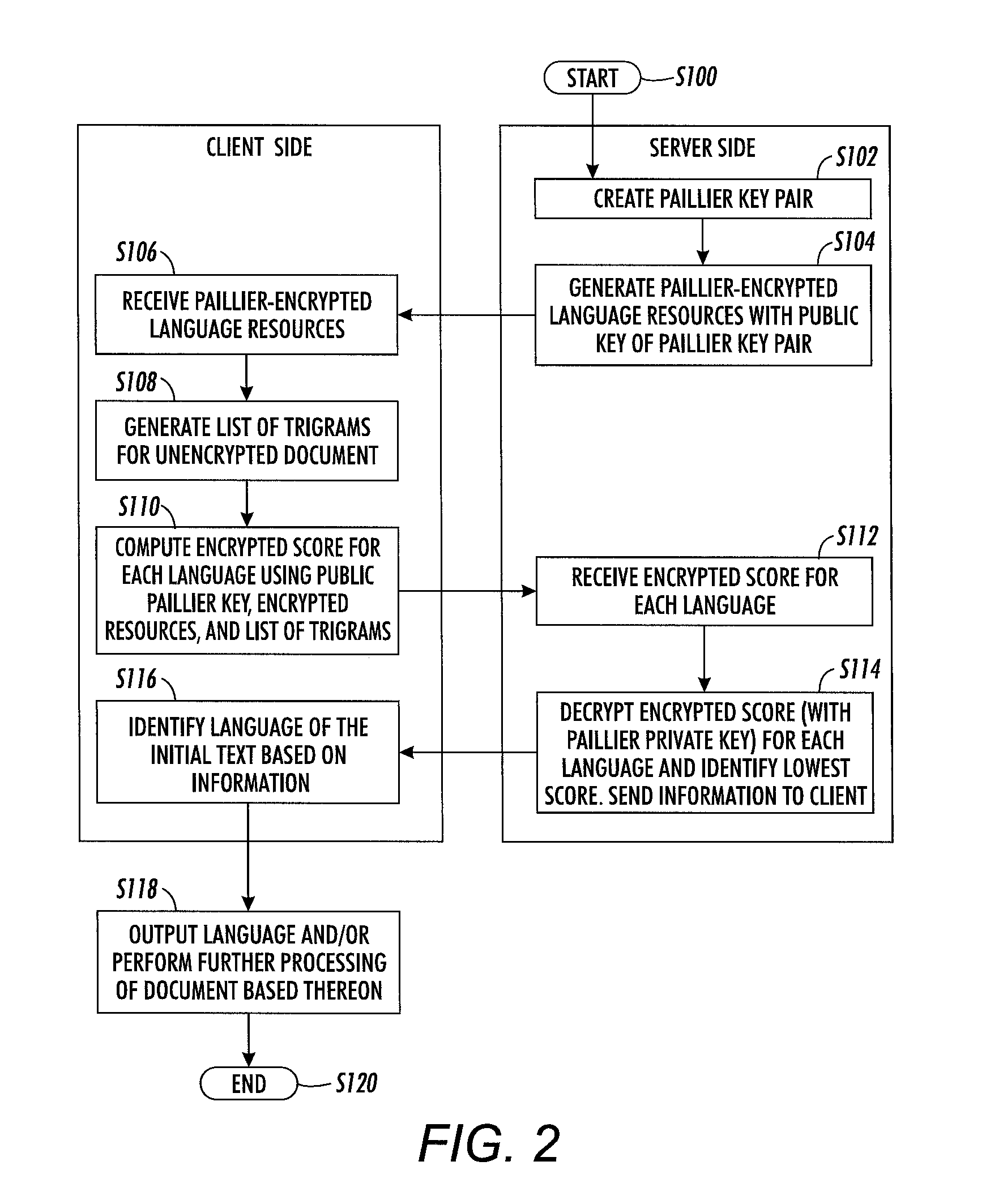Privacy-preserving text language identification using homomorphic encryption
a text language and encryption technology, applied in the field of language identification, can solve problems such as not wanting the client to have access
- Summary
- Abstract
- Description
- Claims
- Application Information
AI Technical Summary
Benefits of technology
Problems solved by technology
Method used
Image
Examples
Embodiment Construction
[0018]Systems and methods for language identification are disclosed which maintain the confidentiality of client and server information. In a first embodiment, language identification is performed primarily by the client, using encrypted resources provided by the server. In a second embodiment, the language identification is performed primarily by the server, but without access to the client's unencrypted data.
1. Client-Side Computation System
[0019]With reference to FIG. 1, a system 10 for identifying the language of an encrypted document in accordance with a first aspect of the exemplary embodiment is illustrated. A user of a client computing device 12 has a text document 14 in an unknown natural language, such as English, French or the like, for which language identification is sought. A database 16 stores a set of n-gram dictionaries (“resources”) 18, 20, 22, one dictionary for each of a set of candidate languages. The database 16 is not accessible to the client computing device ...
PUM
 Login to View More
Login to View More Abstract
Description
Claims
Application Information
 Login to View More
Login to View More - R&D
- Intellectual Property
- Life Sciences
- Materials
- Tech Scout
- Unparalleled Data Quality
- Higher Quality Content
- 60% Fewer Hallucinations
Browse by: Latest US Patents, China's latest patents, Technical Efficacy Thesaurus, Application Domain, Technology Topic, Popular Technical Reports.
© 2025 PatSnap. All rights reserved.Legal|Privacy policy|Modern Slavery Act Transparency Statement|Sitemap|About US| Contact US: help@patsnap.com



